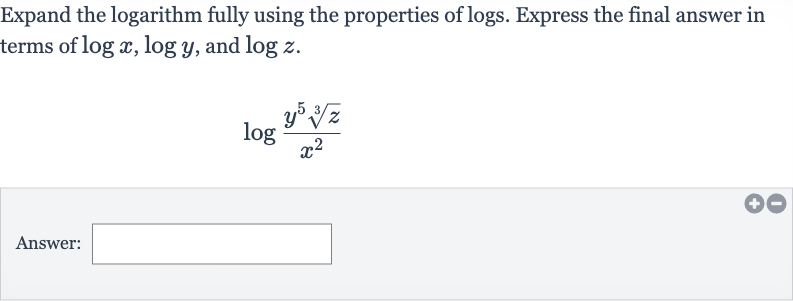Full solution
Q. Expand the logarithm fully using the properties of logs. Express the final answer in terms of , and .Answer:
- Identify Properties: Identify the properties used to expand the logarithm.We will use the quotient property of logarithms to separate the numerator and the denominator, the power property to bring the exponents in front of the logs, and the root property to express the cube root as a fractional exponent.
- Apply Quotient Property: Apply the quotient property to the logarithm.The quotient property of logarithms states that . We apply this to to get:
- Apply Power Property: Apply the power property to the logarithms.The power property of logarithms states that . We apply this to both terms:
- Apply Root Property: Apply the root property to the logarithm of . The cube root of can be written as , so we have already applied the root property when we wrote in the previous step.
- Combine Results: Combine the results to get the final expanded form.The final expanded form of the logarithm is:
More problems from Quotient property of logarithms
QuestionGet tutor help
QuestionGet tutor help
QuestionGet tutor help
QuestionGet tutor help
QuestionGet tutor help

